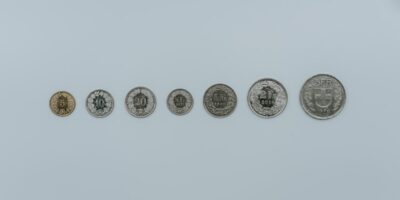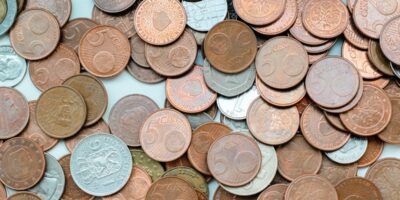Understanding the Value of the 1864 2 Cent Coin
The 1864 2 cent coin holds historical significance and value for numismatists and history enthusiasts. This coin marked a key innovation during a period of economic strain in the United States. The value of this specific coin can vary greatly due to multiple factors such as condition, rarity, and demand.
Historical Context of the 1864 2 Cent Coin

During the Civil War, the United States faced severe coin shortages. In response, Congress approved the creation of the two-cent coin in 1864. It was the first U.S. coin to bear the motto In God We Trust, due to the national distress during the war. This coin was made predominantly of copper, unlike earlier coins that often contained precious metals. Two-cent coins were minted only from 1864 to 1873, making them a short-lived currency.
Physical Characteristics of the 1864 2 Cent Coin
- Composition: 95% copper, 5% tin and zinc.
- Weight: 6.22 grams.
- Diameter: 23 millimeters.
- Design: The obverse side features a shield with a wreath and In God We Trust above it. The reverse side showcases a simple but elegant wreath encircling the denomination 2 CENTS.
Factors Influencing the Value of the 1864 2 Cent Coin
Condition of the Coin: The most significant factor influencing the coin’s value is its condition. Coins are graded on a scale from Poor (P-1) to Mint State (MS-70). An uncirculated specimen with no signs of wear can fetch a premium price. Conversely, heavily worn coins are valued much less.
Rarity of the Coin: The coin’s year and mint mark significantly influence its value. The 1864 2 cent coin comes in two varieties: the Large Motto and the Small Motto. The Small Motto variety is notably rarer and thus more valuable.
Demand Among Collectors: Numismatic demand can fluctuate based on market trends. Coins in sought-after grades or rarer varieties generally attract higher prices. Historical coins can also see increased demand due to interest in specific historical periods.
Grading the 1864 2 Cent Coin
Professional grading services like PCGS and NGC are often used to determine and certify the grade of a coin. Their stringent standards provide a reliable assessment of a coin’s condition, which in turn affects its market value. Common grading includes:
- Poor (P-1): Highly worn, barely identifiable details.
- Good (G-4): Major details worn but clearly visible.
- Fine (F-12): Moderate to considerable wear with whole design visible.
- Very Fine (VF-20): Light to moderate wear with considerable detail remaining.
- Extremely Fine (EF-40): Minor wear on high points, all details sharp.
- About Uncirculated (AU-50): Traces of light wear on the highest points.
- Mint State (MS-60 to MS-70): No wear, may have minor bag marks or slight imperfections.
Comparing Large Motto and Small Motto Varieties
The 1864 2 cent coin Small Motto variety has a reduced font size for In God We Trust. The ribbon ends on the shield’s sides are shaped differently compared to the Large Motto. The Large Motto is more common, making the Small Motto a key point of interest for collectors due to its scarcity.
Small Motto coins in better conditions are especially sought after. Prices for these coins can be considerably higher than their Large Motto counterparts. Collectors should be keenly aware of these differences when assessing or purchasing the coin.
Market Value Examples
- Low Grade (Good to Fine): For a well-worn Large Motto coin, prices can range from $15 to $30. Small Motto coins in this condition might fetch between $50 and $100.
- Mid Grade (Very Fine to Extremely Fine): Prices for the Large Motto variety are typically $50 to $75. Small Motto coins in similar condition could go for $150 to $300.
- High Grade (About Uncirculated to Mint State): Large Motto coins in these grades can sell from $100 to several hundred dollars. The Small Motto variety in similar condition can command prices well over $1000.
Noteworthy Transactions
A Small Motto 1864 2 cent coin graded MS-67 by PCGS once sold for over $20,000, due to its pristine condition and rarity. Meanwhile, an MS-65 Large Motto coin sold for approximately $500. These transactions highlight the dramatic differences that condition and rarity make in determining a coin’s worth.
How to Authenticate an 1864 2 Cent Coin
Authentication often involves examining the coin’s physical characteristics closely. Expert graders look at the font size, the shield’s ribbon ends, and surface details for wear patterns. While most transactions occur with graded coins, some collectors and dealers have the expertise to authenticate raw coins.
Investing in 1864 2 Cent Coins
For those considering coins as an investment, focus on quality and rarity. The numismatic market can be volatile, but well-preserved coins from key years often hold their value well. Collectors should also diversify their portfolios, considering different types and eras of coins.
Care and Preservation
Keep coins in a cool, dry place to prevent oxidation, which can further degrade their condition. Use protective holders or albums designed specifically for coin storage. Avoid cleaning coins, as this can reduce their numismatic value. Tarnish and patina can actually add to a coin’s appeal among enthusiasts.



